Tech Sales Professional Career Path: What To Expect

In this article
Shortly after landing his first job out of college as a sales development representative at a marketing software company, Evan Warner began coaching junior varsity baseball after work. He worked with a group of 15-year-olds, advising them on their batting stance so they could hit the ball further, or teaching them how to mount a better defense. That’s when he discovered his passion for leadership and coaching.
“I was walking home one day and thinking to myself, ‘how do I replicate the fulfillment that I get from coaching in my career?’” Warner recalled.
He decided to take matters into his own hands, assuming the duties of sales team lead despite his entry-level job title. He conducted cold-calling role plays with his teammates so they could practice their client pitches and hosted informal meetings with coworkers to trade advice. At the end of each day, he would email the sales manager—who was based out of a satellite office—a recap of everyone’s progress.
“Eventually, she offered me the team lead role and I’ve been managing SDRs (sales development representatives) for the last eight years,” said Warner, who has supervised sales teams at major SaaS (Software-as-a-Service) companies including SurveyMonkey and Fixt.
What Is Tech Sales?

By 2025, tech sales is expected to reach a market value of $436.9 billion, growing 12.5% annually. According to Glassdoor, the average total compensation in the tech sales sector is around $71,000.
Working in software sales is unlike any other sales job. Unlike off-the-shelf B2C (business to consumer) software applications like Microsoft Office or Adobe Creative Suite typically purchased by individuals, B2B (business-to-business) software solutions are intended for organizations. Customers pay a monthly or annual subscription to access the software, meaning the customer relationship needs to be continuously maintained after the initial sale.
SaaS products are custom software solutions that come with implementation assistance, ongoing technical support, after-sales care, and regular software updates. Unlike traditional, off-the-shelf software products, SaaS is sold on a monthly or annual subscription basis, with features that are tailored toward the client’s unique business needs.
What’s more, SaaS software is customizable and must be designed to suit unique business requirements and integrate with other software solutions the client already uses via custom APIs.
Companies purchase software to help them solve business problems, adhere to compliance requirements, and operate more efficiently. Not only does each company have a unique use case, but there are several factors that will affect how and if they can use the software. For example, the quality and quantity of their data. Dirty data must be cleaned before being imported into a software solution, which makes the implementation process more complicated. Furthermore, an organization’s pre-existing technology stack may or may not be compatible with the new software solution. While most modern software applications are designed for plug-and-play compatibility, companies that are using in-house or legacy software may have problems with integration.
In fact, the value proposition of SaaS is to provide a bespoke technology solution that comes with ongoing support. Competition in SaaS is so fierce that companies compete more on ancillary services like customer care than software capabilities.
“The most important thing in SaaS is customer centricity because SaaS companies are built on a recurring revenue model,” said Warner, an enterprise sales manager at Envoy who worked closely with Springboard to create the curriculum for the Tech Sales Bootcamp.
According to Warner, revenue from the initial sale represents only about 5% of the total revenue the customer will generate over the course of the business relationship (known as customer lifetime value), thereby demonstrating the importance of nurturing the relationship after a sale is made.
“We go through the customer base to come up with a profile of what the ideal customer looks like,” he explained. “Which ones have seen the most success using our software, and why? Then we come up with ways to do more of that.”
More importantly, B2B software products are designed to scale—so if a client opens a new manufacturing plant or enters a foreign market, their software grows with them. SaaS solutions usually run on cloud servers and are accessible through desktop, mobile, and web applications—an especially crucial feature as one in four workers continues to work remotely.
A survey by Deloitte found that 70% of CIOs said that agility and scalability were the top motivations for purchasing cloud-based SaaS during the COVID-19 pandemic.
SaaS purchases represent a major decision for organizations: getting the product up and running involves expensive and time-consuming processes like data migration (porting data from one software application to another), software implementation (integrating a software application into a business workflow), and employee training.
The average annual contract value (ACV)—the total amount of revenue a contract has for a year—is $21,000. Compare that with the cost of a B2C ACV, such as a Netflix subscription, totaling around $155 a year.
What Types of SaaS Products Are out There?
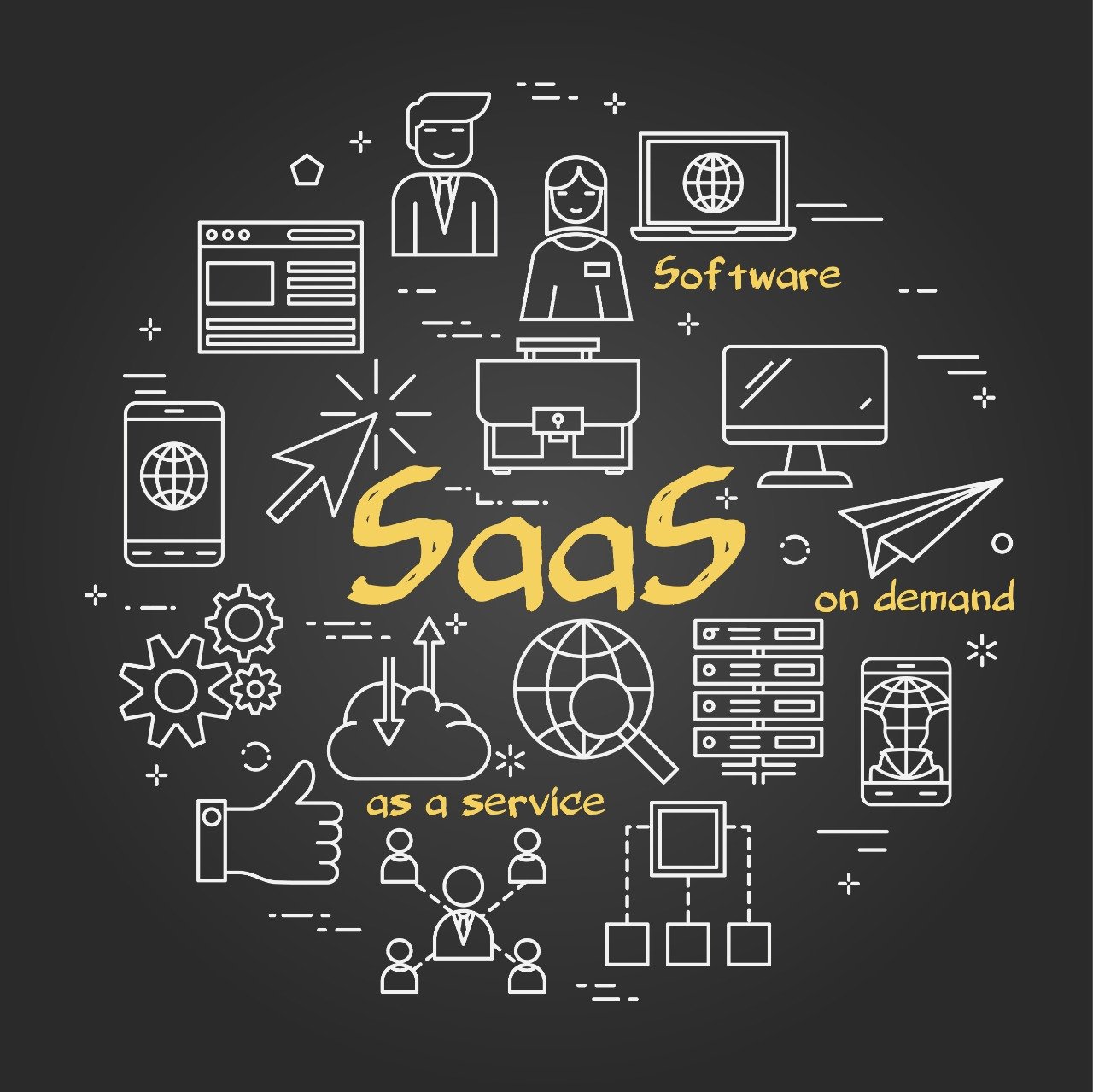
SaaS solutions can serve a general purpose, such as office productivity software, cloud security, and collaboration solutions—also known as horizontal SaaS. The horizontal model allows businesses to cater to a broad customer base from a variety of industries.
Conversely, vertical SaaS products serve a niche market. For example, accounting software for law firms, which have unique billing processes. Here are the most common types of SaaS products:
- Customer Relationship Management (CRM) software – Manage customer data, identify sales opportunities, create sales reports, and manage marketing campaigns.
- Project management software – Set project timelines, assign tasks to team members, track budgets, maintain deadlines, collaborate with teammates.
- Accounting and billing software – Keep track of cash flow, transactions, and budgets; generate financial reports,.
- Enterprise Resource Planning (ERP) software – Manage day-to-day business activities such as accounting, procurement, project management, risk management and compliance, and supply chain operations.
- Email marketing software – Manage email subscribers, create email campaigns, design and build custom email templates.
- Content management software (CMS) – Create landing pages using low-code or no-code, write and publish blog posts, monitor web analytics.
What Does a Tech Sales Professional Do?

A software sales professional assumes a consultative role, with the foremost objective of understanding the client’s business goals and recommending customized solutions. Typically, B2B clients will search for software to solve a specific business problem.
For example, a company experiencing above-average customer churn might shop around for a CRM solution that offers predictive modeling to determine the causes of poor retention. Or an organization that is losing revenue because of unscheduled downtime at its manufacturing plants might seek out maintenance management software.
The tech sales representative’s role is to determine what the client needs, offer the right value proposition, and assist the client with purchasing, onboarding, and going live with the software.
Day-to-day responsibilities:
- Find new customers and create a sales relationship with potential buyers
- Discuss software needs with clients and recommend the best-matching products
- Write reports and proposals for clients and make pitch presentations to demonstrate product features
- Answer client questions about products
- Negotiate service agreements and pricing with clients
- Submit orders for sales processing
- Schedule meetings with current customers to discuss product performance
- Communicate customer feedback to development teams and executive management
Types of Software Sales Roles
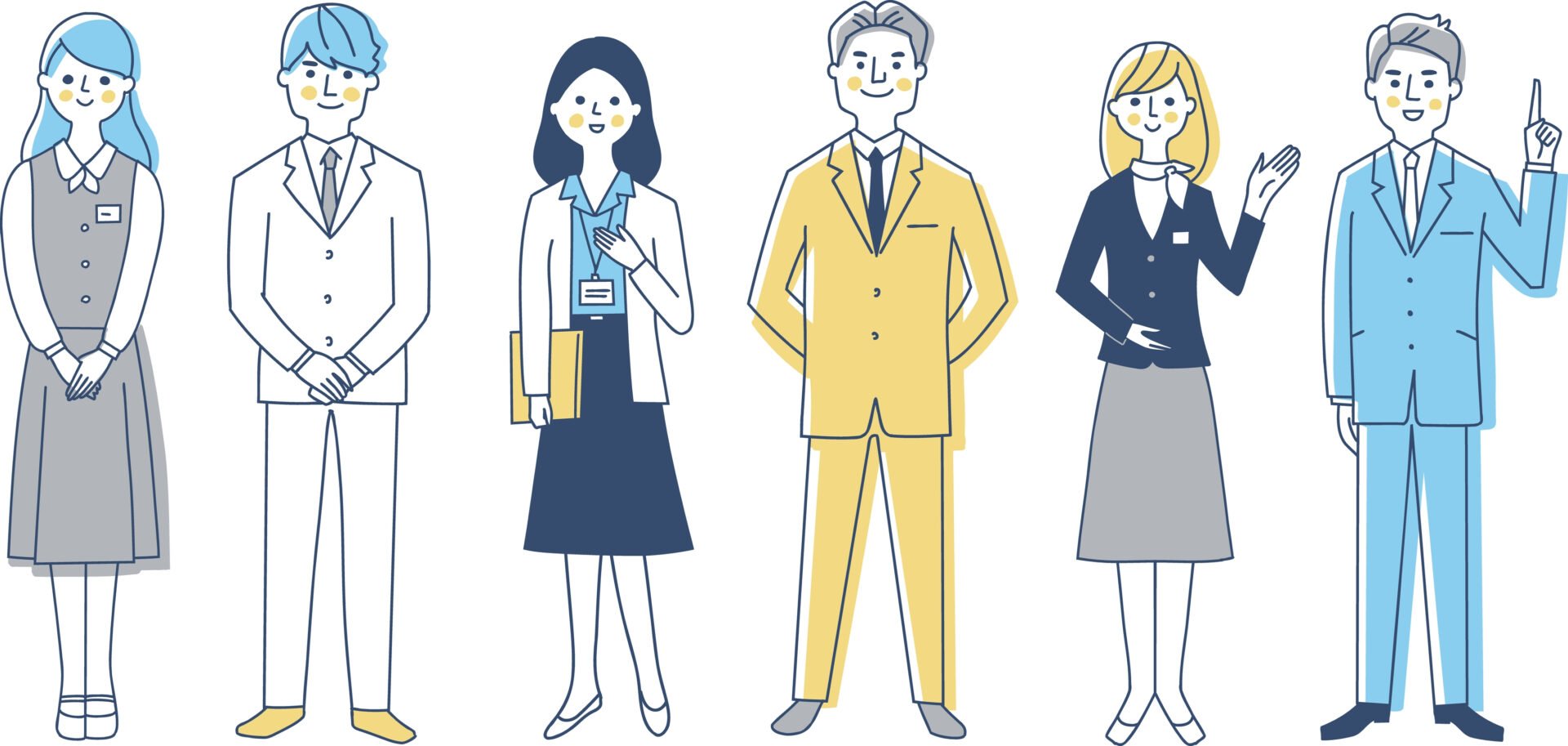
Given the length and complexity of the SaaS sales cycle, going from prospecting to closing involves a gamut of professionals who specialize in different parts of the sales process. If the pressure to close sales and meet revenue quotas seems daunting to you, bear in mind that you are working in concert with an entire sales team, and are responsible for a relatively small part of the process—unless you are a sales manager or VP of sales.
Software sales offers vast opportunities for growth, with the chance to earn a higher base salary and more commissions at each level. While senior-level roles may not offer commissions, the base salary is typically competitive enough to offset this.
Sales Development Representative (SDR)
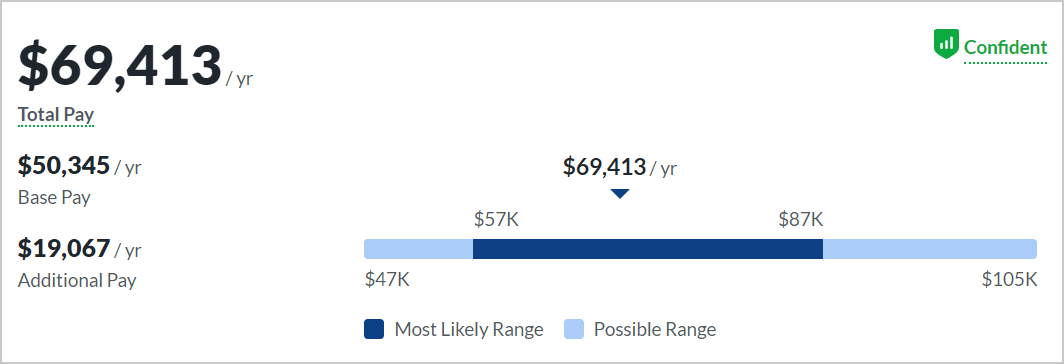
SDR is an entry-level role that is responsible for outbound sales prospecting, which means generating and qualifying leads and moving them through the sales pipeline. SDRs spend most of their time doing cold outreach to customers (phone calls, emails, LinkedIn messages) to set up meetings with account executives and other sales closers to learn more about the company’s products and services. Some SDRs focus on inbound sales prospecting—following up with prospects who have shown prior interest, such as downloading a whitepaper or visiting the company booth at a tradeshow.
For entry-level sales roles, performance hinges on two metrics: qualified meetings and activity. “Qualified meetings are meetings between account executives and prospects that lead to a sale,” said Warner. Activity simply refers to the number of outbound communications and SDR attempts with prospective clients in a given time period, regardless of whether said activity results in a meeting with the prospect.
Average compensation, excluding commissions: $50,345
Outside Sales Rep
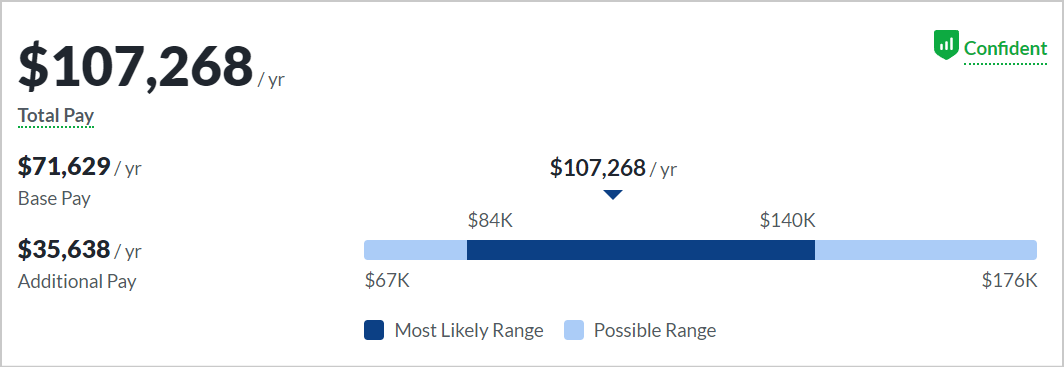
Multinational companies might hire outside sales reps to build relationships in untapped markets. For example, a US-based firm might hire someone in Singapore to build relationships in the Asia-Pacific region.
Average compensation, excluding commissions: $71,629
Account Executives
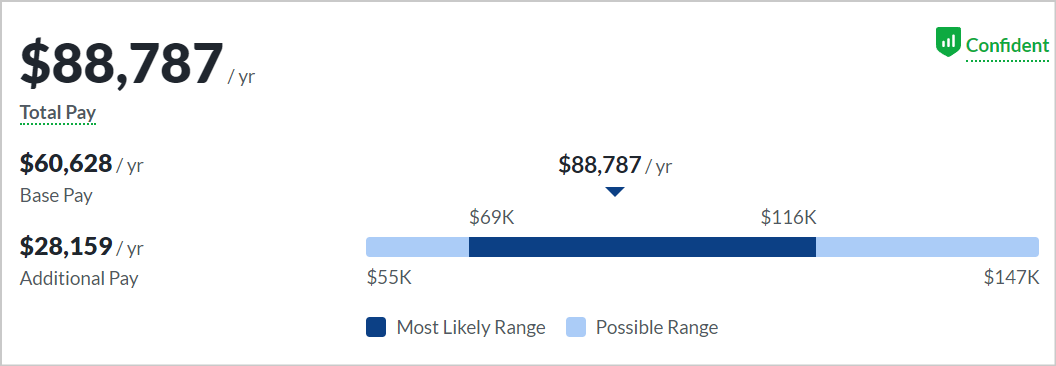
An account executive’s role is to find new customers and close deals with qualified leads. AEs typically follow up with sales-qualified leads produced by the SDRs in order to move them along the sales pipeline. They advocate for the client’s needs while advocating for their company’s ability to meet those needs.
Average compensation, excluding commissions: $60,628
Account Manager

After a deal closes, the post-sales account manager steps in to provide customer service, ensure contracts are renewed, and upsell on existing accounts. Unlike AEs, account managers are not responsible for new customer acquisition. However, given their close relationship with the client, they must report bugs to engineers to ensure clients can use the product effectively.
Average compensation, excluding commissions: $52,956
Sales Manager
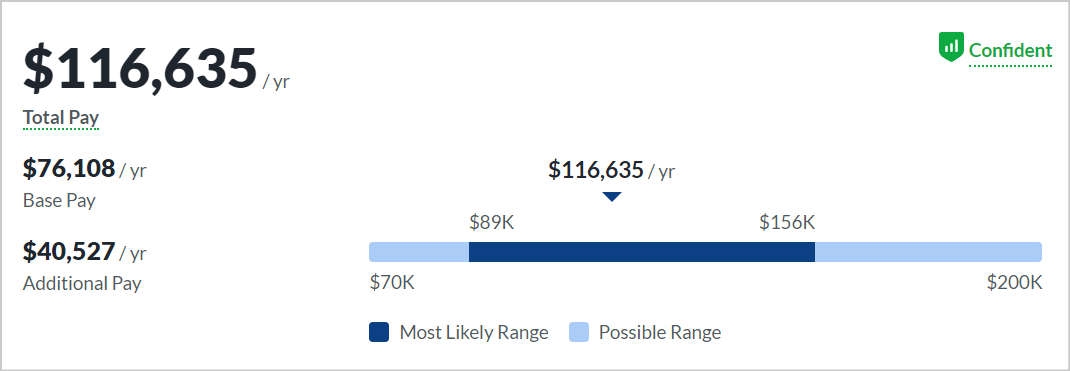
Typically found in large enterprises, sales managers oversee sales teams. They are usually high-performing salespeople themselves. While a VP is responsible for crafting sales strategy, a sales manager is responsible for executing it, training, and managing their team, monitoring their performance, and reporting to the VP. Sales managers also recruit, hire, and train new members of the sales team.
Average compensation, excluding commissions: $76,108
VP of Sales
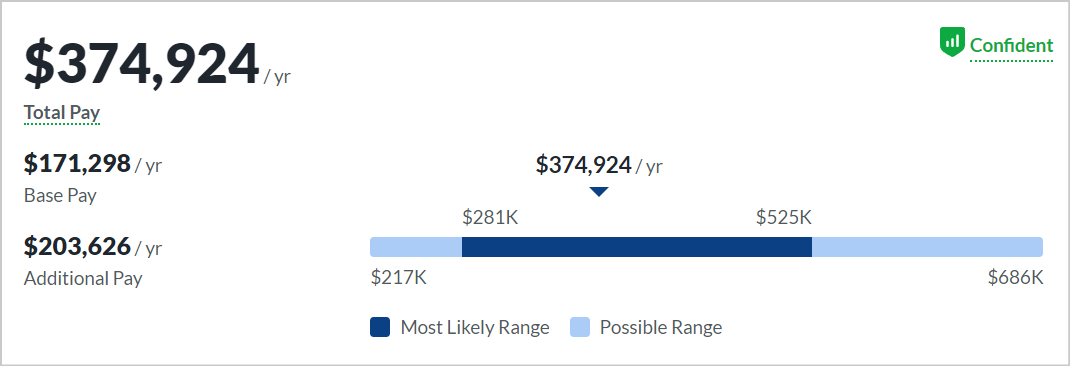
Responsible for the sales of the entire company. The VP of sales establishes sales goals and a sales strategy to align with the organization’s growth objectives. They also work closely with marketing to ensure marketing strategy is aligned with sales strategy and vice versa. At smaller companies, the VP may also hire salespeople or manage the sales team. At large companies, VPs oversee sales managers.
Average compensation, excluding commissions: $171,298
Sales Engineer

Because SaaS requires complex technical processes, an engineer will occasionally accompany sales teams to client meetings to answer technical questions.
Average compensation, excluding commissions: $79,128
The Software Sales Process: The Difference Between SaaS Sales and Traditional Sales

Software sales is very different even from hardware sales. Sales professionals must have deep product knowledge and the patience to lead clients through a longer sales cycle. While certain physical products like homes and automobiles sell themselves, software is not a tangible product, so customers will need a way to engage digitally. Product marketing is key to the SaaS sales process. Simply put, product marketing is the process of driving demand for a product through product positioning and messaging.
Product marketers will equip sales teams with materials that allow prospects to better understand what the solution is, such as demos, user documentation, whitepapers, case studies, and more.
Here are some other reasons why software sales is unlike any other sales role.
- Software evolves quickly
Software undergoes updates far more quickly than physical products. This is partly for security reasons—ongoing bug fixes and patches are essential to protecting users from new security vulnerabilities—but also due to intense competition in the industry. SaaS companies typically push new code to production two or three times a year. Consequently, software sales professionals are constantly learning the intricacies of evolving products. They must be ready to apprise clients of new software updates and discuss the benefits.
- The SaaS sales cycle can be very long
Traditionally, the sales cycle is correlated with price—big-ticket items take longer to sell compared with smaller purchases—but software sales is an exception. The SaaS sales cycle averages 84 days but can stretch several months or even years depending on the annual contract value and the prospect’s readiness to purchase. According to sales professional Matt Bertuzzi, products <$5,000 in annual contract value take a little over a month to close, while products in the $100,000 ACV range take six months or more. Large enterprises typically have formal processes for procurement, which requires sign-off from numerous stakeholders.
Software sales professionals must have ample content to nurture leads through a protracted sales cycle—such as white papers, case studies, testimonials, free trials, or demo videos—to keep the brand top of mind. Sales and marketing work closely together to provide the customer with educational content, nurture the relationship via ongoing email campaigns, and provide necessary user documentation.
The wealth of choices available to customers, competition from open-source software, and outsourcing IT operations are all factors that contribute to the lengthened sales cycle.
- The sales experience revolves around the client
Sales reps must be ready to include multiple decision-makers from the target company in the sales process, including executive management. Sales professionals use lead tracking software to keep detailed notes about client feedback and determine the right content to share.
- Pricing models vary
SaaS products usually come with a subscription-based pricing model billed on a monthly or annual basis. There are various types of pricing models according to the number of users or the number of features buyers opt for.
- Flat rate pricing
Some SaaS companies charge a flat fee billed monthly or annually, which grants customers access to all product features. This type of pricing is typically used for less customizable software.
- Usage-based pricing
Also known as pay-as-you-go, usage-based pricing is commensurate with how much you use the software. This pricing model is most common within infrastructure- and platform-related software companies, such as Amazon Web Services and Azure. Customers are charged according to the number of API requests or gigabytes of data used.
- Tiered pricing
Tiered pricing offers different levels of features, often starting with a freemium model and ranging all the way to enterprise. The rationale behind offering a limited version of the product for free is that by allowing a wide net of users to test-drive the product, many will convert into paid users.
- Per-user pricing
This type of pricing model charges companies based on the number of licenses they purchase. Each license is priced according to the level of access—for example, a user license usually costs less than an administrator license. Accordingly, different types of users have different levels of access to software features.
What Skills Do You Need To Become a Software Sales Professional?

Making a sale in SaaS is about advising clients on the best solutions while keeping their needs front and center. Sometimes, this means being honest when there isn’t a mutual fit.
“If there’s a good chance a customer might end up churning, that’s bad because you put all this investment into the relationship but you only get that 5% revenue slice and none of the remaining 95% which you would get if they became lifetime customers,” said Warner.
Most importantly, SaaS salespeople need deep product knowledge and the ability to explain a complex technical product in layman’s terms. They also need strong business sense so they can help prospects see how the product will fit into their existing workflow and solve their most pressing business problems.
- Product knowledge
An essential sales skill, product knowledge means knowing how to communicate a product’s features, benefits, and uses in a convincing and accurate way. Understanding the product’s full technical functionality is key to building credibility and helping potential clients create customizable solutions tailored to their needs.
Product knowledge comes from a variety of sources, such as studying product literature, reading trade, and industry publications to better understand the product’s use cases, listening to customer feedback, or even receiving training directly from the manufacturer.
Software products evolve rapidly, with new features and software updates being introduced periodically, so tech sales professionals must constantly work to maintain their product knowledge.
- Interpersonal skills
Sales reps are typically a customer’s first point of contact with an organization. Given that SaaS products are overwhelmingly differentiated by after-sales care and customer support, SaaS sales hinge more on relationships than traditional sales.
Consequently, sales reps who are able to build strong relationships with potential clients from the outset are more likely to build trust and convince customers that they will be in good hands.
- Business acumen
Technology implementations represent a major strategic investment for businesses. Tech sales professionals must provide decision-makers with important information to gain buy-in from executives. Contextualizing product benefits in terms of business requirements and devising customized solutions goes a long way toward closing a sale. Tech salespeople must also contextualize information for different stakeholders, from finance executives to technical managers.
- The ability to collaborate with technical team members such as software implementation specialists, developers, engineers
Sales reps are the main liaison between a SaaS company and its customers. If a bug is preventing a customer from using the software, or a new feature is proving to be unpopular, sales reps are often the first to know, and it is their job to communicate accordingly with developers. They are also responsible for understanding and communicating the latest software updates and features.
- Customer success management and after-sales support (for AEs)
Account executives are responsible for maintaining the customer relationship after a sale is closed. Happy clients are more likely to agree to upsells and contract renewals, so AEs can potentially bring a lot of revenue to the business. Customer success management is the art of ensuring customers achieve their desired outcomes while using a product or service. As the main liaison between the vendor and the customer, these duties typically fall to the AE (although some companies will have dedicated customer success managers). In some companies, this is considered after-sales support.
Since you’re here…
Want a tech salary without learning to code? Our Tech Sales Bootcamp will get you ready to land a job in six months—no coding skills necessary. Browse our 2022 tech sales career guide and check out our student reviews. A massive career switch is totally in-reach for you.
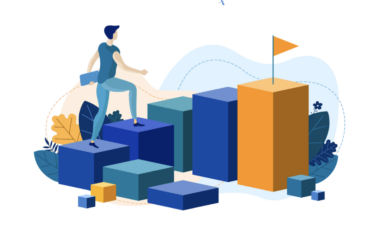

![Technical Sales Representative Job Description [2022 Guide]](https://www.springboard.com/blog/wp-content/uploads/2022/03/technical-sales-representative-job-description-2022-guide-380x235.png)